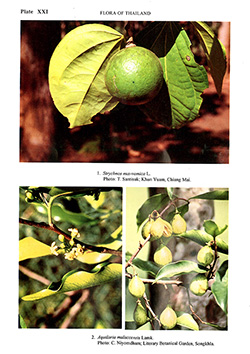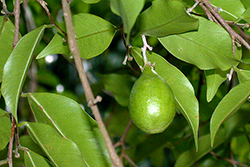e-Flora of Thailand
Volume 6 > Part 3 > Year 1997 > Page 227 > Thymelaeaceae > Aquilaria
1. Aquilaria malaccensis Lamk.wfo-0001142510
Enc. 1: 49, 1786; Baill., Hist. Plant. 6: 100, f. 67–69. 1877; Gilg, Bot. Jahrb. 18: 506, f. 8 B. 1894; Pflanzenfam. 3(6a): 224, f. 77 B. 1894; Williams, Bull. Herb. Boiss. Ser. 2. 4: 1031. 1904; Merr, Int. Rumph. 381. 1917; H. Hall., Meded Rijks-Herb. 44: 16. 1922; Ridl., Fl. Malay Penins. 3: 147. 1924; Metcalfe, Kew Bull. 1933: 5. 1934; Chalk & Chattaway, Trop. Woods 50: 26, f. 18. 1937; Corn., Ways. Trees, ed 2. 1: 632. 1952; Hou in Fl. Mal. Ser. 1. 6: 9, f. l h. 1960; Blumea 12: 285. 1964; Corner & Watanabe, Ill. Guide Trop. Pl. 495, f. 1961; Melville, Proceed. second Gondwana symposium 586, f. 2. 1970; Whitmore, Tree Fl. Mal. 2: 385, f. l. 1973.— Aquilariella malaccensis (Lam.) Tiegh., Bull. Soc. Bot. Fr. 40: 77. 1893; Ann. Sc. Nat. Bot. Ser. 7. 17: 216. 1893. Plate XXI: 2.
Accepted Name : This is currently accepted.
Synonyms & Citations :
Description : Tree up to 40 m tall, bark whitish to greyish, smooth; branchlets slender, pubescent glabrescent. Leaves acuminate, sometimes with a rather pronounced tip, 0.5–1 cm long, 5–15 cm by 2–5.2 cm, base cuneate, chartaceous, glabrous or with scattered hairs along the midrib beneath; secondary nerves 12–16 pairs, elevated beneath, obscure above; petiole pubescent or glabrous, 3–6 mm long. Inflorescence terminal or axillary, 8–10-flowered; peduncle pubescent to slightly hairy, 4–10 mm long. Flowers green or yellowish; pedicel slightly hairy, 2–5 mm long. Calyx-tube 3–5 mm long puberulous outside, almost glabrous inside; calyx-lobes 2–3 by 1.5–2 mm, puberulous on both sides. Petals pilose, 1–1.5 mm long. Stamens with filaments 1–2 mm long; anthers 1–1.5 mm long. Ovary pubescent, 1–2 mm long; style not distinct; stigma globose, 1 mm. Fruit oblong, 2.5–4 by 1.5–2.5 cm (unripe), pubescent. Seed ovoid, 10 by 6 mm, covered with red hairs, beak ca 4 mm long, appendage twisted, as long as the seed.
Thailand : PENINSULAR: Trang (Khao Phong, Sikao).
Distribution : India (W Bengal, Assam), Burma (Tenasserim) Malay Peninsula (type), Sumatra, N & E Borneo, the Philippines.
Ecology : Scattered in evergreen forests.
Vernacular : Mai hom (ไม้หอม)(Peninsular); ka-yu-ka-ru (กายูการู)(Malay-Pattani).
CommonName : Eagle wood Tree.
Notes: Aquilaria malaccensis and A. microcarpa Baill. are very nearly related. They are separated by the size of the fruits and the shape and length of the appendages. A close study may prove that the two species are identical. In many Oriental countries the fragrant, hard wood, calambac, eagle- or aloe-wood, is used in producing boxes and other articles. Old decaying hardwood also makes a highly esteemed incense and it has also been used as a medicine (lignum aloes, agallochum). Fibres from the bark are used for making rope.


